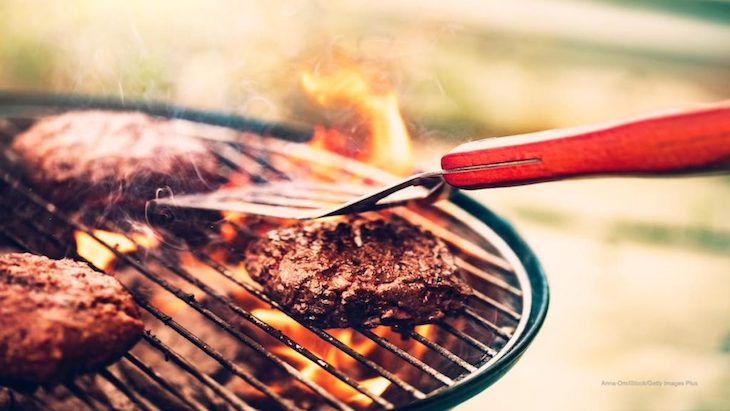Memorial Day is next Monday, so the USDA is offering Memorial Day grilling food safety tips, to pros and beginners alike for the long weekend. Rates of food poisoning and food poisoning outbreaks increase in the summer months because bacteria grow faster in warm weather. In addition, cooking and eating food outdoors can be risky because people are tempted to take shortcuts to food safety.

Sandra Eskin, USDA’s Deputy Under Secretary for Food Safety said in a statement, “Memorial Day marks the beginning of warmer weather and summer fun. Don’t let foodborne illness ruin the cookout –follow food safety guidelines like washing your hands, thoroughly cooking your food and checking food temperature with a thermometer.”
First, always use a food thermometer when you are cooking meat and poultry. Make sure your food thermometer is good quality and accurate. You can test it by putting the probe in boiling water; it should register 212°F. If not, you’ll need to adjust your measurements up or down when you check on food.
Poultry should always be cooked to 165°F. Beef, lamp, pork, and veal steaks, chops, and roasts should be cooked to 145°F with a three minute standing time. Ground beef, pork, lamb, and veal should be cooked to 160°F. Fish should be cooked to 145°F. And all egg dishes should be cooked to 160°F.
Frozen pre-browned products may look cooked, but check the package. It should state whether the product is fully cooked or raw, and give cooking instructions. This may be indicated by the phrases “Cook and Serve,” “Ready to Cook,” and “Oven Ready.”
Mechanically tenderized meat, or meat that has been pierced with needles or knives to tenderize it ,must be cooked to 160°F for beef, pork, lamb, and veal, or 165°F for poultry. If the outside of the meat is contaminated with pathogens, tenderization will transfer the bacteria to the interior, where it will not be destroyed unless the product is thoroughly cooked.
When the temperature is above 90°F, the food safety rule of refrigerating perishable ingredients after two hours shrinks to one hour. After one hour at those temperatures, dangerous pathogens will begin to grow.
In a recent USDA study, almost 85% of participants said they don’t ‘keep cold foods cold when they serve them. And in the same survey, 66% said they did not keep cooked foods hot. The danger zone for rapid bacterial growth is from 40°F to 140°F.
Finally, if you don’t have access to water and soap when entertaining or eating outside, make sure you have hand sanitizer with at least 60% alcohol, or alcohol based moist towelettes to clean hands, cutting boards, and utensils.
Follow these Memorial Day grilling food safety tips and stay safe.




